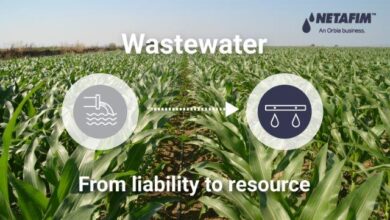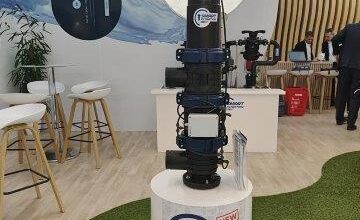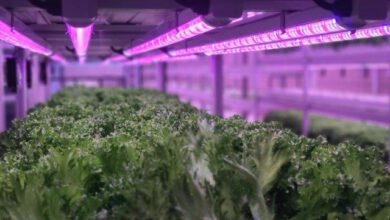Preventing Runoff and Soil Erosion by Using Synthetic Polymers
Moving sprinkler irrigation system (MSIS) as a solution for runoff and erosion of soil fertility
Meni Ben-Hur
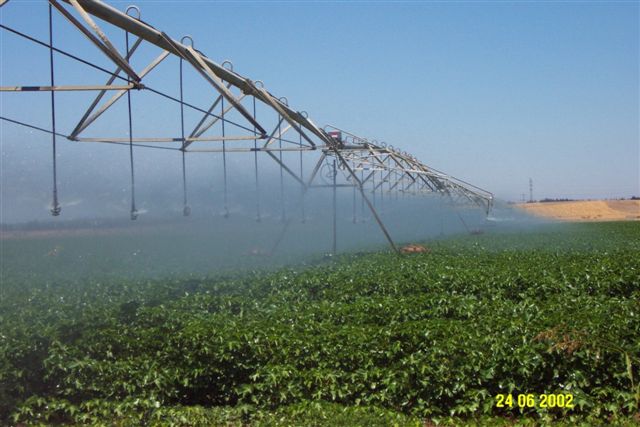
Introduction
Arid and semiarid regions, such as Israel, are characterized by lack of fresh water sources and highly variable precipitation. In addition, the fresh water resources in these regions are expected to decrease as a result of global warming, while the population continues to grow and the demand for this water increases.
Therefore, the strategy for management of water and soil resources in these regions should be designed to maximize or optimize crop production, while conserving water and avoiding soil degradation. Soils in arid and semiarid regions are characterized by unstable structure, and consequently, extensive runoff and soil erosion are occurring in these regions. Surface runoff could cause flooding downstream, and water for crop production may be lost (Ben-Hur, 2008). These runoff and erosioncould decrease the soil fertility and increase environmental pollution.
 |
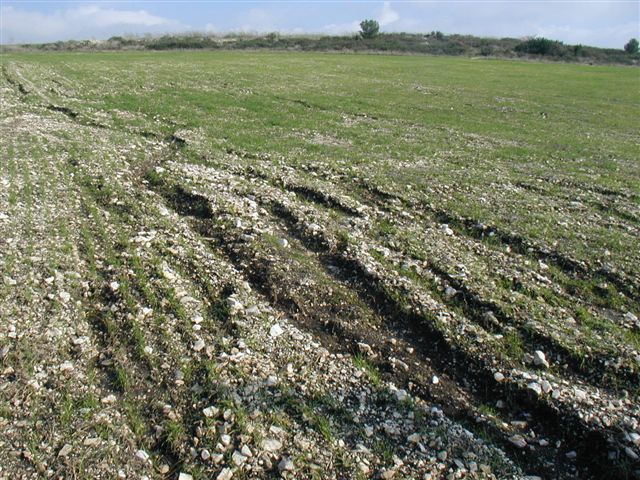 |
Polymer use under sprinkler irrigation
Measured amounts of runoff from 3-m2 cotton and peanut plots during various MSIS irrigation events are presented in Fig. 2. Anionic polyacrylamide (PAM) was added to the soil surface at a rate of 20 kg/ha, by spraying prior to the first irrigation. The cotton and peanut plots were irrigated by MSIS at average water application rates of 160 and 100 mm/h, respectively.
In general, runoff was significantly lower in the PAM treatment than in the control for both soils (Fig.2), but PAM was more effective in the vertisol than in the loess. The runoff decrease in the PAM treatments resulted from the polymer activity that increased aggregate stability at the soil surface and limited seal formation. It was found also in this study that the soil loss from untreated (control) fallow plots was significantly higher than from PAM-treated ones (Table 1). The same trend was found in cotton and peanut plots, but the differences, in general, were not statistically significant (Table 1). In the cotton and peanut plots, the plants canopies protected the soil surface from the impact of the water drops, and consequently minimized the effect of the polymer.
Ben-Hur (2001) study the effect of nonionic polymer (P-101) on runoff (Fig. 3) and tuber yield of potatoes (Fig. 4) grown in loess soil and irrigated with a linear MSIS with three emitter types, No. 1, Spinner and Super spray, which differed in their discharge rates. For each emitter type, the runoff amounts for the entire irrigation season in all polymer treatments were lower than those in the control (Fig. 3). The potato yields in all polymer treatments for each emitter type were higher than those in the control, but these differences were not statistically significant (Fig. 4), apparently because the small number of replicates (three). The irrigation efficiency (the ratio between plant yield and total water application) in Sprayer No. 1, Super Spray and Spinner emitters for the control treatment (untreated soil) was 56, 43 and 31 kg/mm, respectively, compared with 66.3, 65.0, and 48.5 kg/mm, respectively, in the 40-kg/ha polymer treatment.
It can be concluded that polymer use in fields irrigated with an MSIS has beneficial effects of reducing runoff and erosion and of increasing the yields of some crops. However, the eventual implementation of the polymers in commercial fields will require performance of more field experiments, in large-scale in particularly, to evaluate different polymers and application methods, in order to improve polymer handling and effectiveness.

Fig. 1: Moving sprinkler irrigation system irrigate cotton field
Stabilizing steep slopes with polymers
Steep bare slopes, especially those of cuttings or earth-filled embankments, exposed to rainfall are extremely susceptible to runoff and erosion. Agassi and Ben-Hur (1991) found in sandy loam soil from Israel’s coastal plain, that annual erosion from 10-m long embankments with a 48% slope, exposed to annual rainfall of 520 mm was 299 Mg/ha from plots with a northern aspect and 416 Mg/ha from plots with a western aspect.
The rill and gully erosion that occur under such conditions can endanger the stability of the embankment itself and that of nearby structures.
Runoff and erosion on earth embankments can be prevented by stabilizing the aggregates at the soil surface with soil conditioners. The effects of 70 kg/ha of cationic polysaccharide (PS) + 10 t/ha of phosphogypsum (PG), 20 kg/ha of anionic PAM + 10 t/ha of PG, and of 200 kg/ha of PS on erosion were studied by Agassi and Ben-Hur (1992). This study was conducted at three different sites in Israel with steep embankments (33 to 60% slopes) under natural rainfall conditions. The studied plots were 2 m in width and of various lengths, ranging from 12 to 20 m, and the soils had clay contents ranging from 10 to 64% and ESPs ranging from 1 to 20%. The PG and the polymers were sprayed on the soil surface before the rainy season. The soil losses in the various sits with the different treatments are presented in Fig. 5 for two winters. The soil losses in the treatments SP + PG and PAM + PG were 6 to 10 times smaller than those in the control (untreated soil) (Fig. 5). Visual observation of the soil surface in the PS + PG and control treatments (Fig. 6) supported the above results.
I was concluded from the above results that PS and PAM molecules in the presence of PG adsorbed onto the soil particles in the aggregates, and acted as a cementing material, that stabilized the soil aggregate against the destructive forces of the raindrops. The stabilizing effect of PG on the aggregates was a result of two factors:
(i) The PG dissolution increased the electrolyte concentration in the soil solution, and thus limiting the clay dispersion.
(ii) PG dissolution released Ca+2 cations into the soil solution. These cations increased the adsorption of the PAM molecules by acting as bridges between the negative charge of the clay and the PAM molecules. In the case of the PS, the Ca+2 cations may have provided competition for the adsorption of the PS molecules, and this, in turn, promoted its deeper penetration into the aggregates, so enhancing their stabilizing effect.
 |
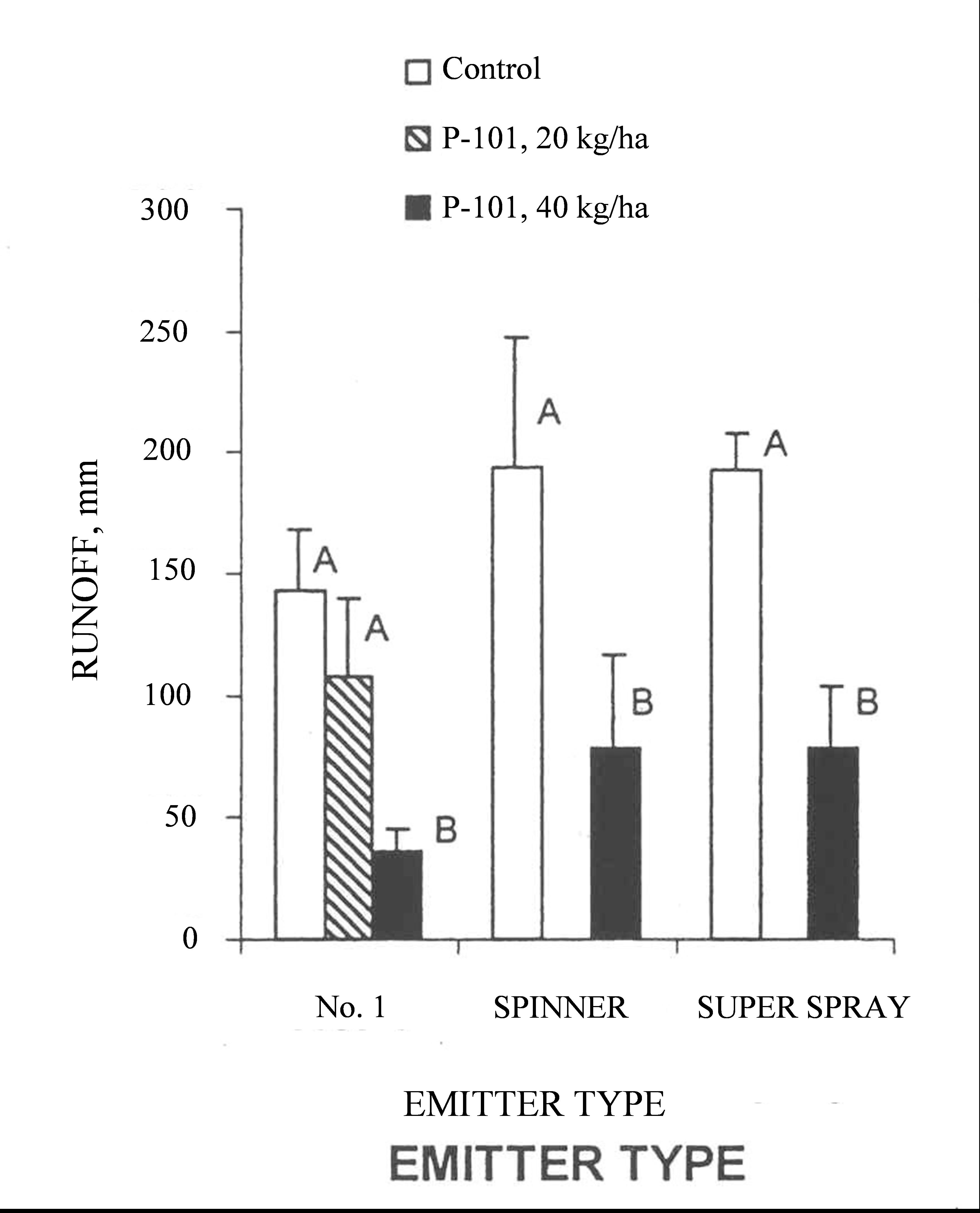 |
Left: Fig. 2: Percentage runoff from polyacrylamide (PAM) treated and control plots in two soils irrigated with a moving sprinkler irrigation system. Vertical lines indicate two standard deviations. Numbers in parentheses indicate cumulative depth of irrigation in mm (after Levy and Ben-Hur, 1998).
Right: Fig. 3: Averages of total runoff in the entire growing season for various polymer applications and emitter types in potato field irrigated with a moving sprinkler irrigation system. The vertical bars represent standard deviations, and for each emitter type, different letters labeling columns indicate significant differences, at p <0.05, between the polymer treatments (after Ben-Hur, 2001).
.jpg) |
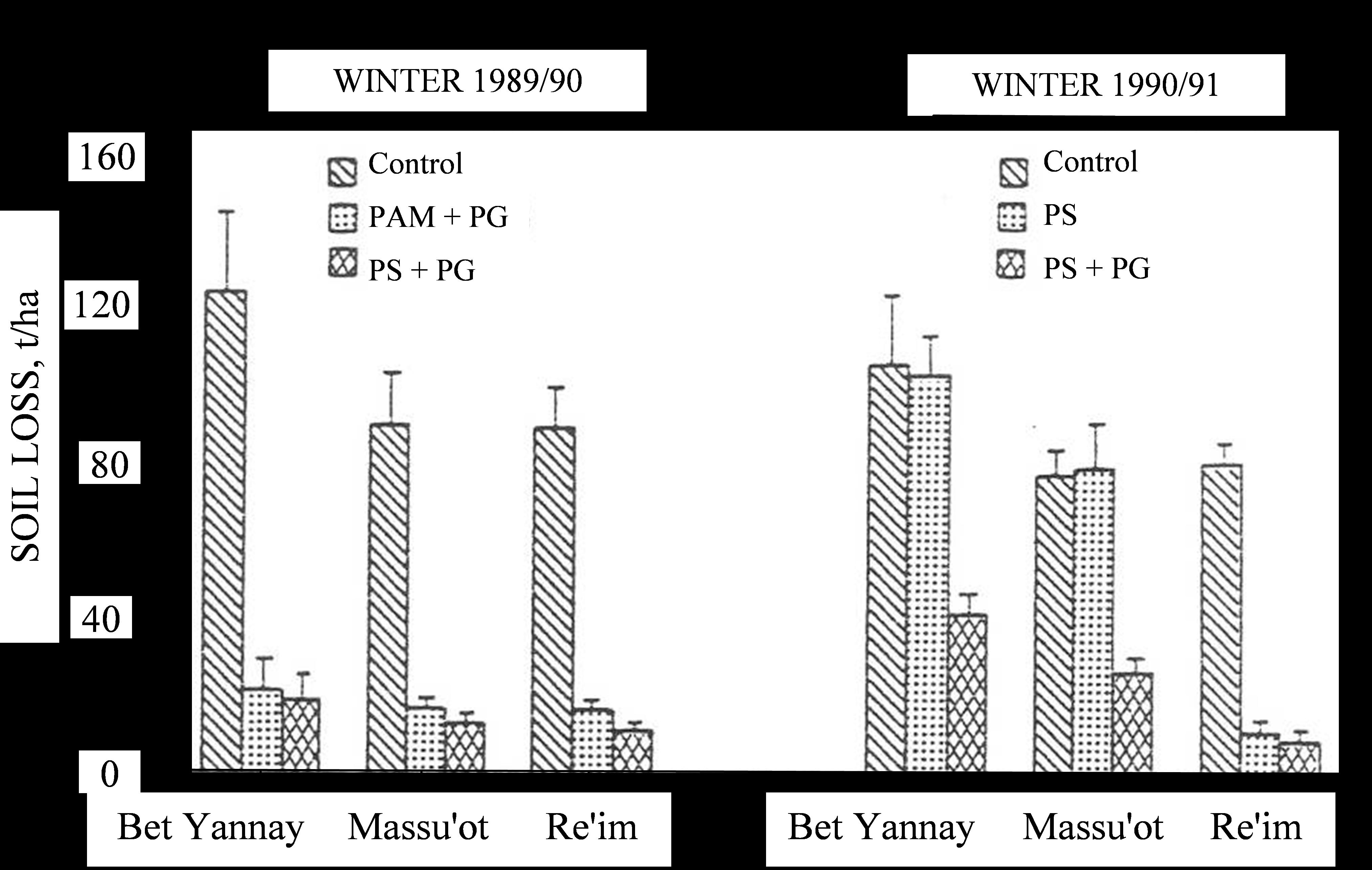 |
Left: Fig. 4: Average potato yields for various polymer applications and e
mitter types in field irrigated with a moving sprinkler irrigation system. The vertical bars represent standard deviations (after Ben-Hur, 2001).
Right: Fig. 5: Total soil losses from untreated plots (control) and from plots treated with polysaccharide (PS) + phosphogypsum (PG), polyacrylamide (PAM) + PG, and PS, in various sites during the 1989/90 and 1990/91 winters. The vertical bars represent standard deviations (after Agassi and Ben-Hur, 1992).
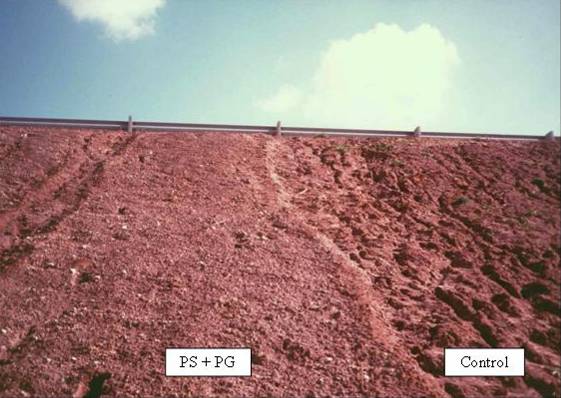
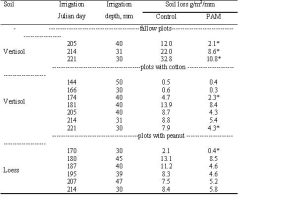
Left: Fig. 6: Soil surface of untreated (control) plot and of plot treated with polysaccharide (PS) + phosphogypsum (PG) at the end of the 1989/90 winter (from Agassi and Ben-Hur, 1992)
Right: Table1: Soil loss from Vertisol and loess irrigated with moving sprinkler irrigation system for control (untreated soil) and 20 kg/ha polyacrylamide (PAM) treatments (follow Levy and Ben-Hur, 1998).
References:
Agassi M, Ben-Hur M (1991) Effect of slope length, aspect and phosphogypsum on runoff and erosion from steep slopes. Australian Journal of Soil Research 29: 197-207. Agassi M, Ben-Hur M (1992). Stabilizing steep slopes with soil conditioners and plants. Soil Technology 5: 249-256. Ben-Hur M (2001) Soil conditioner effects on runoff, erosion and potato yield under sprinkler irrigation with different emitters. Agronomy Journal 93:1156-1163. Ben-Hur, M. (2008). Seal formation effects on soil infiltration and runoff in arid and semiarid regions under rainfall andsprinkler irrigation conditions. In: Climatic Changes and Water Resources in the Middle East and in NorthAfrica (F. Zereini and W. Jaeschke eds.), p. 429-452, Springer-Verlang, Berlin Heidelberg. Levy, G.J. and Ben-Hur, M. (1998). Some uses of water-soluble polymers in soil. In: HandBook of soil conditioners (A. Wallach ed.), p. 399-428. Marcel Dekker, In., New York.
(c) Institute of Soil, Water and Environmental Sciences, the Volcani Center, ARO, P.O. Box 6, Bet Dagan 50250, Israel.
meni@volcani.agri.gov.il
(Published in ISRAEL AGRICULTURE, 2013)

